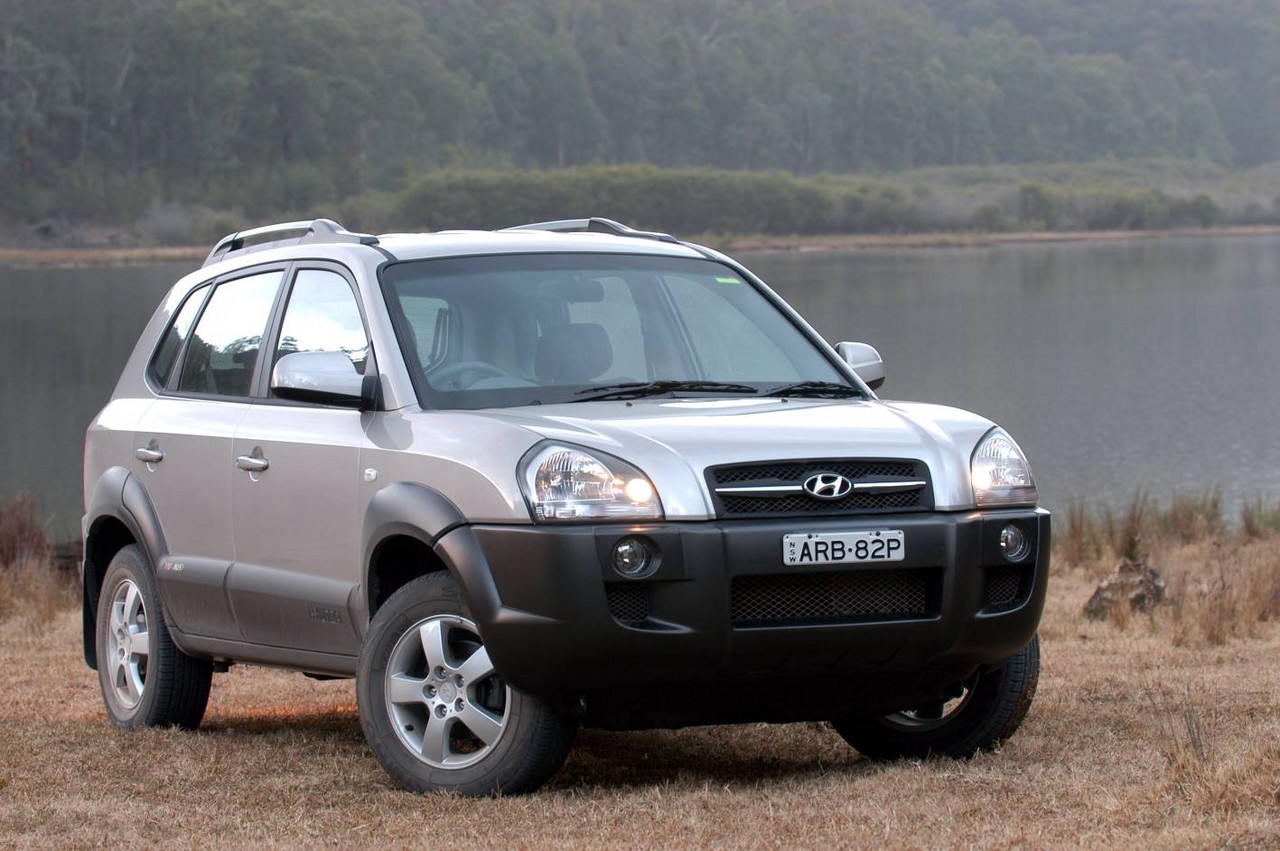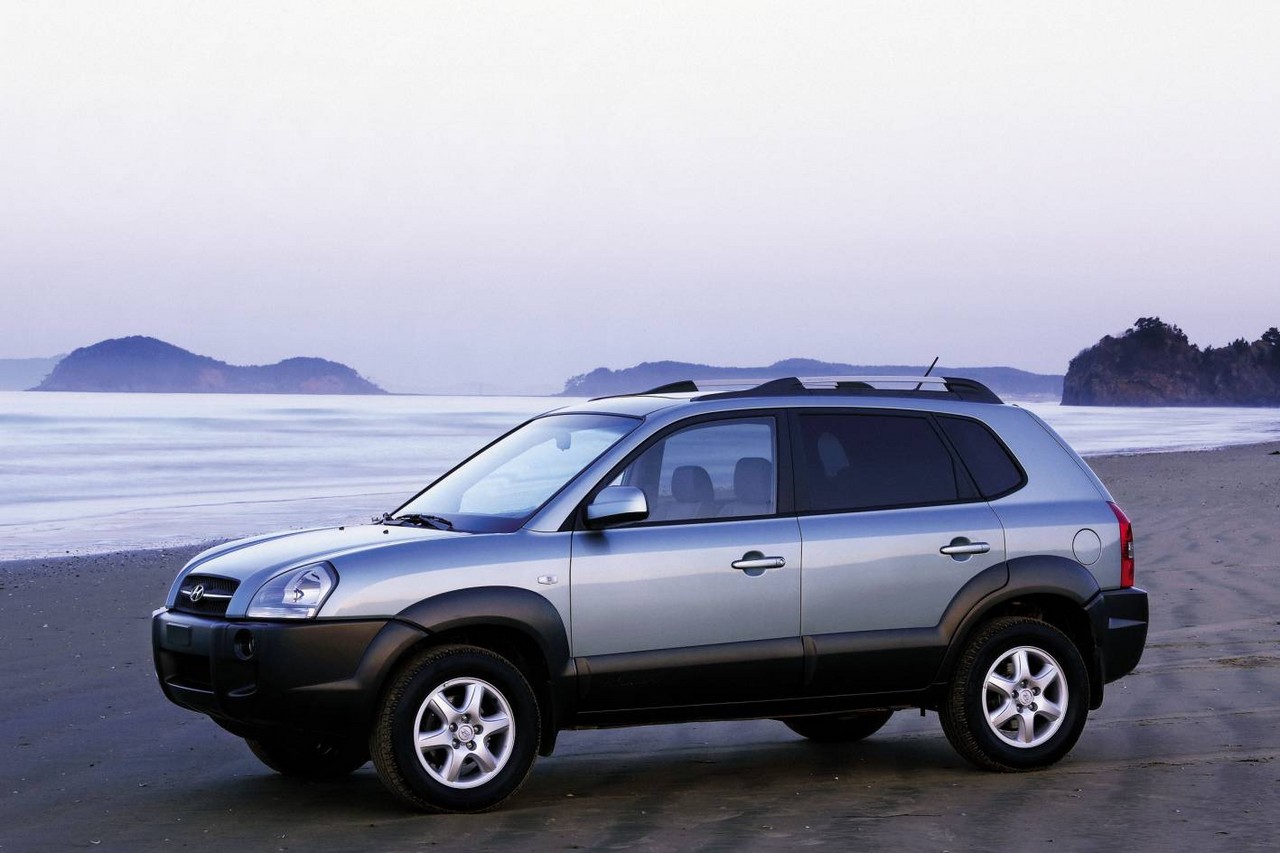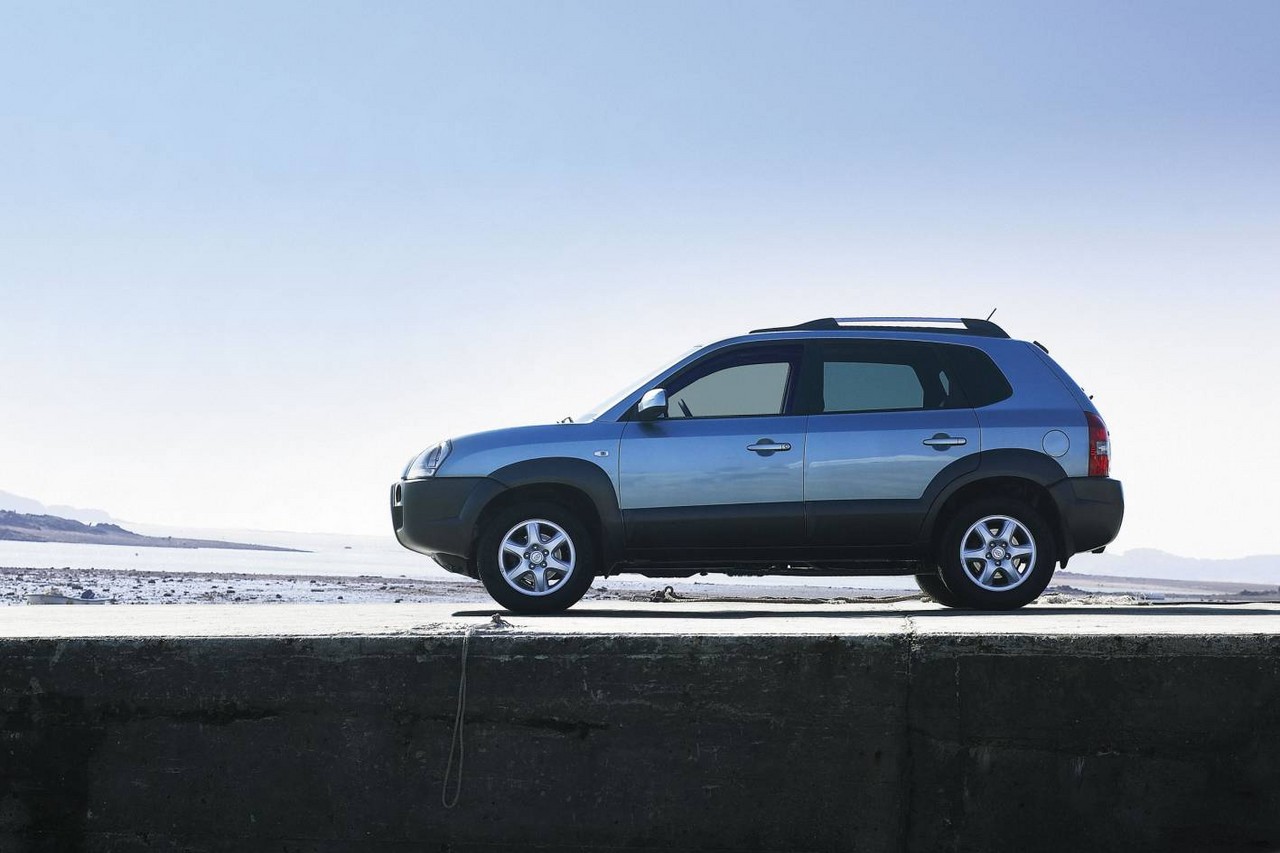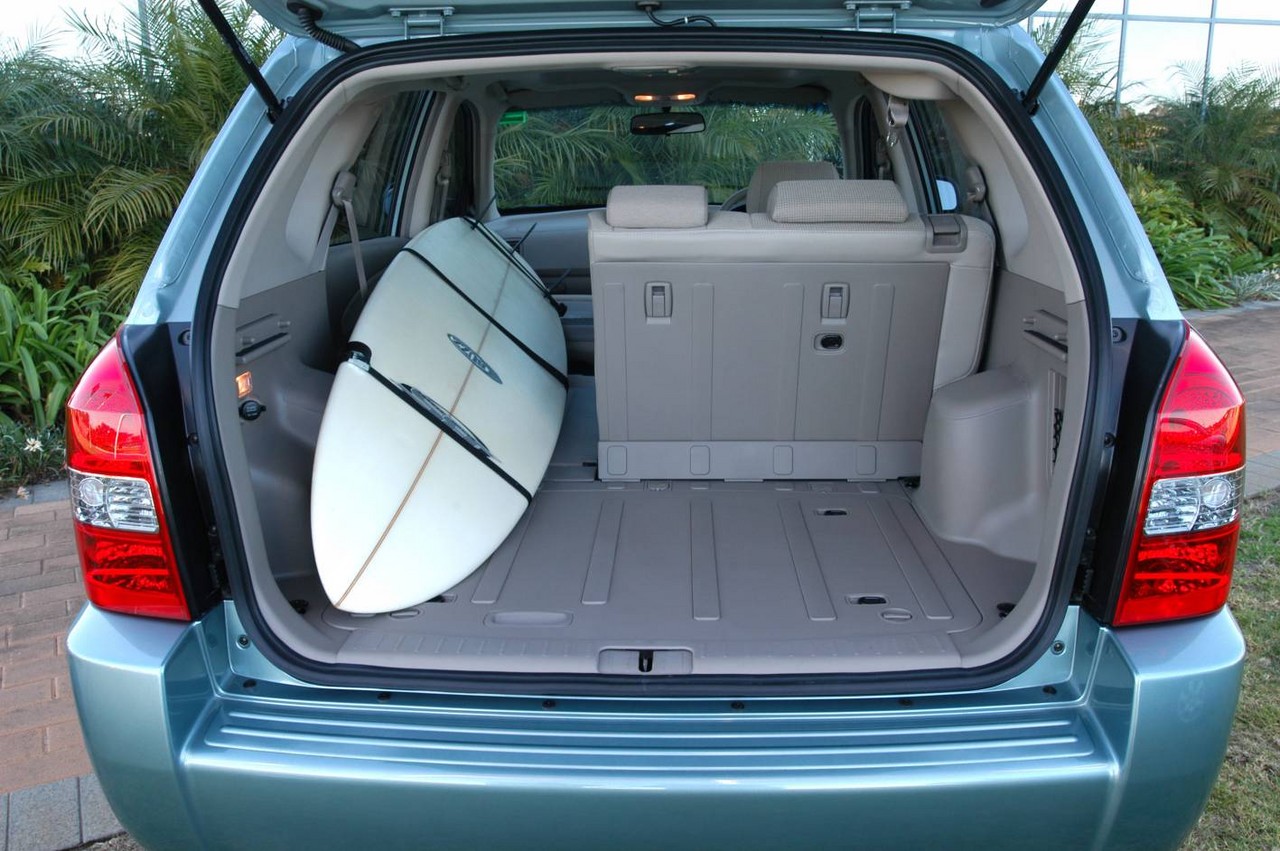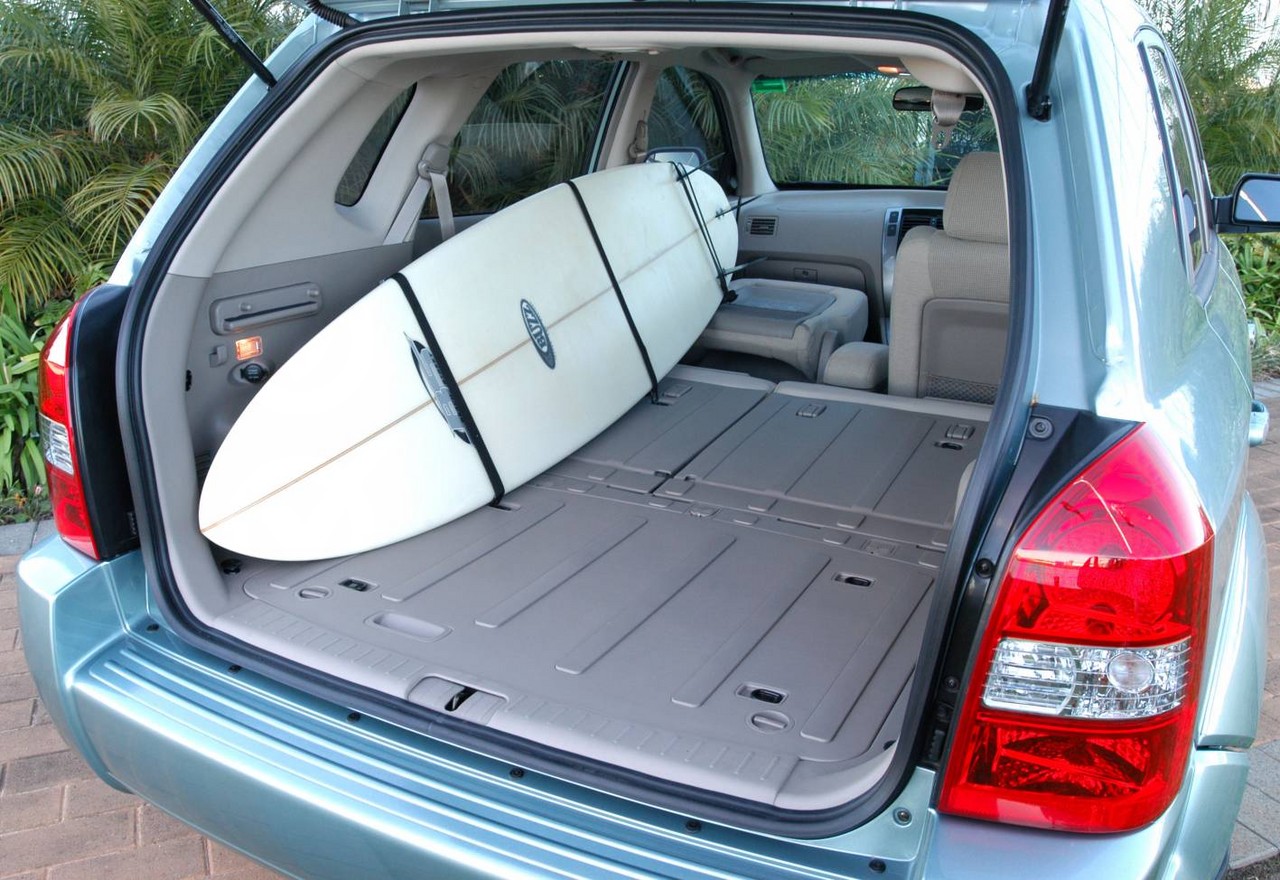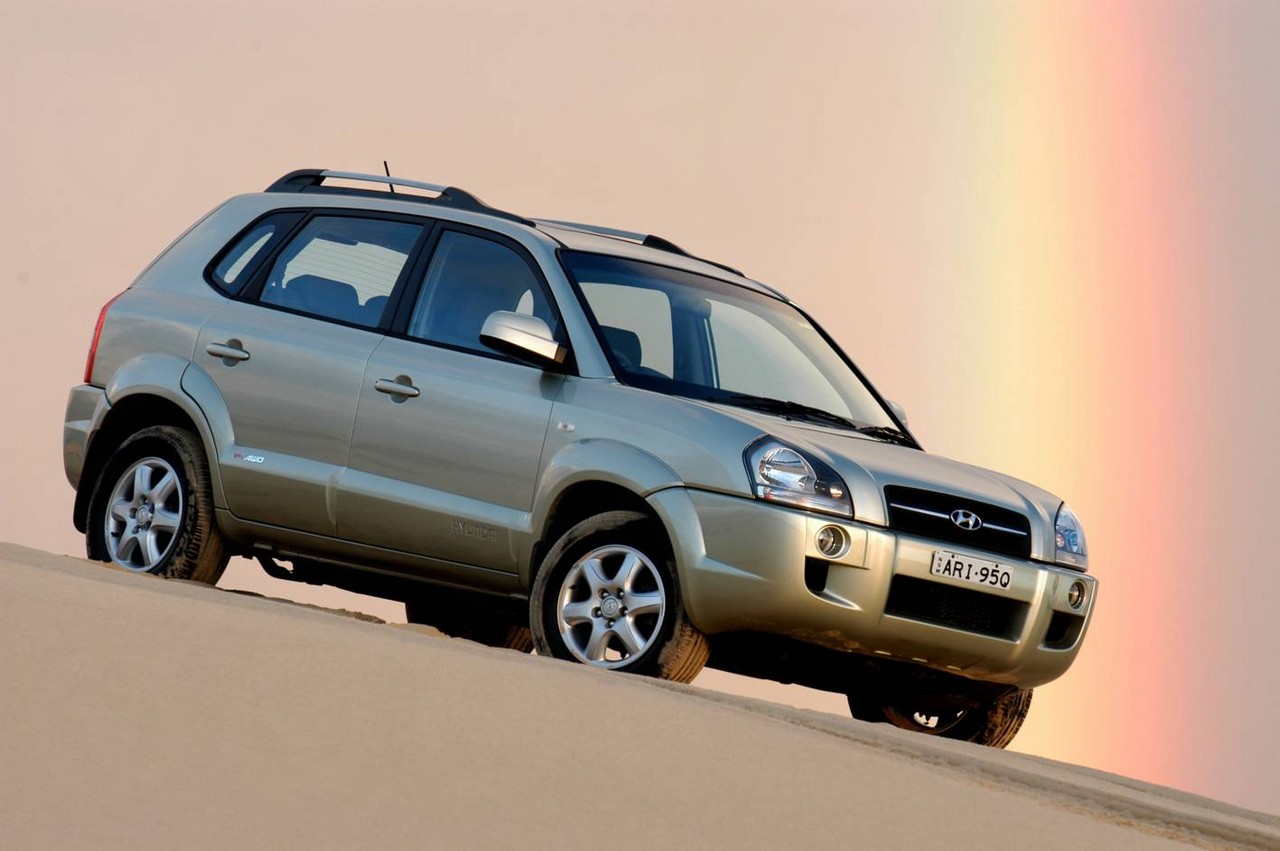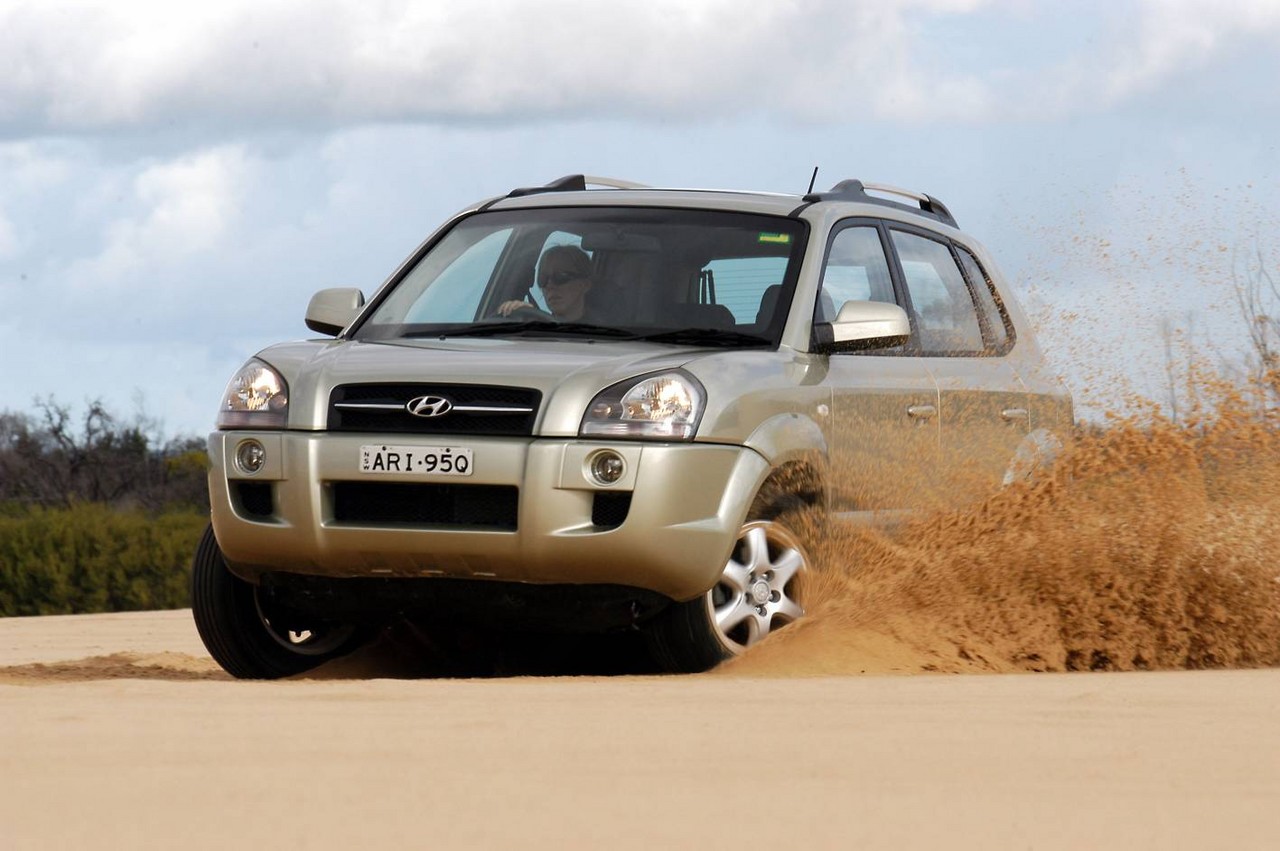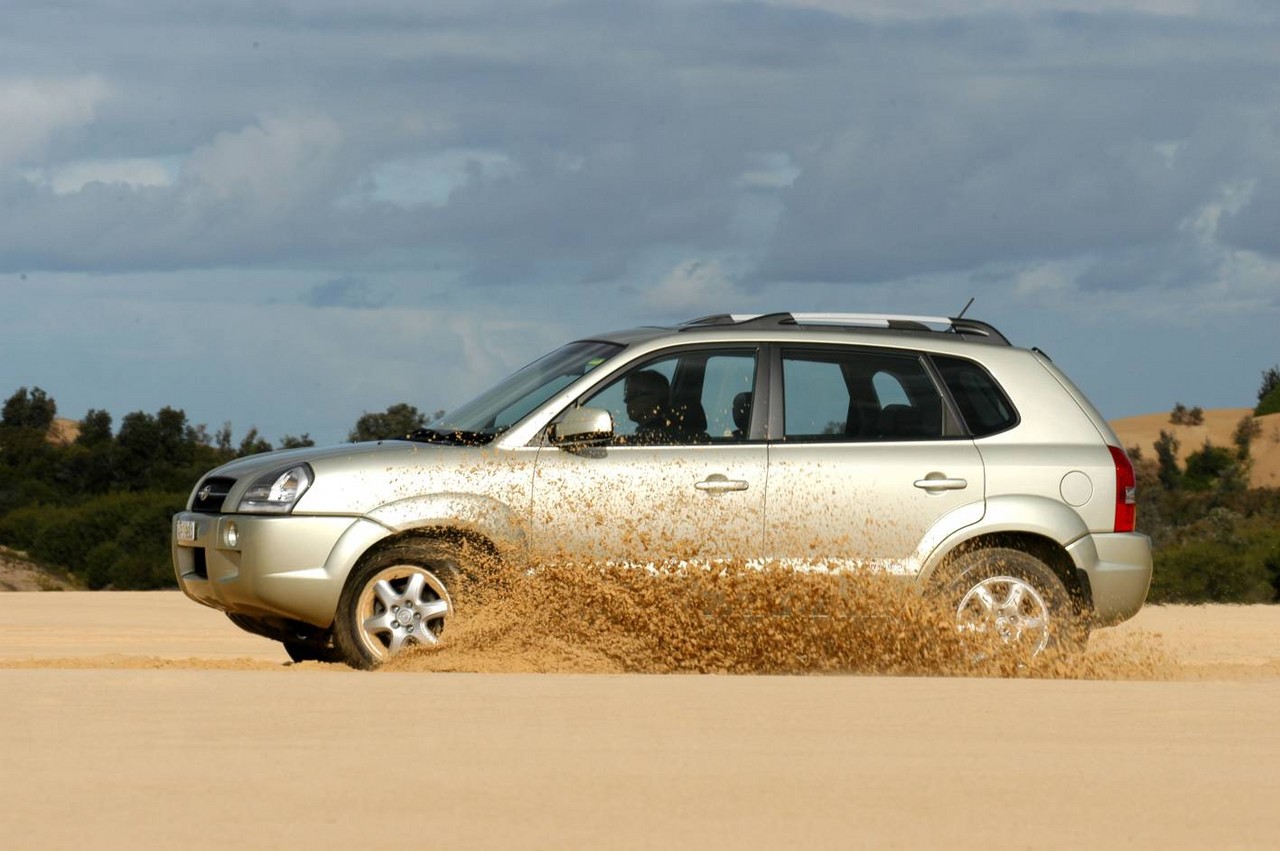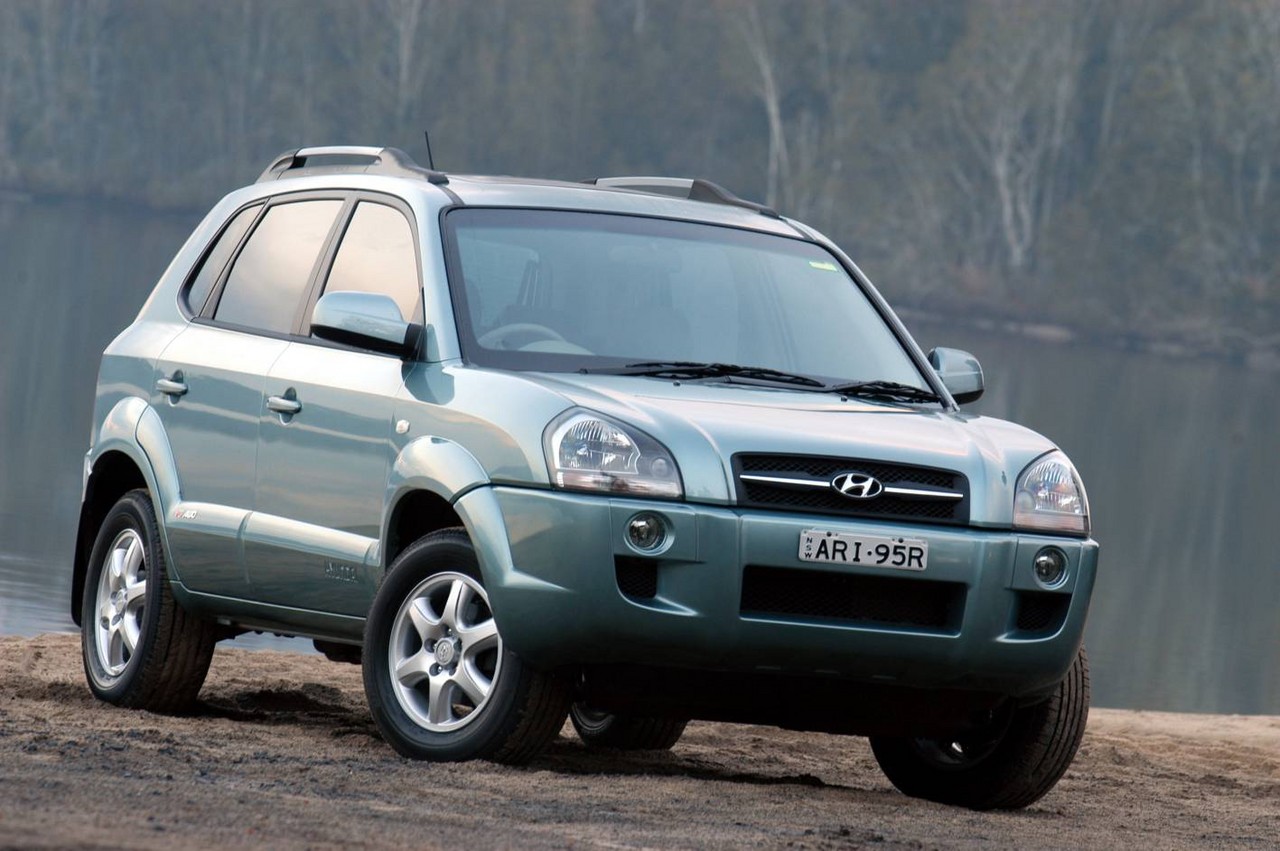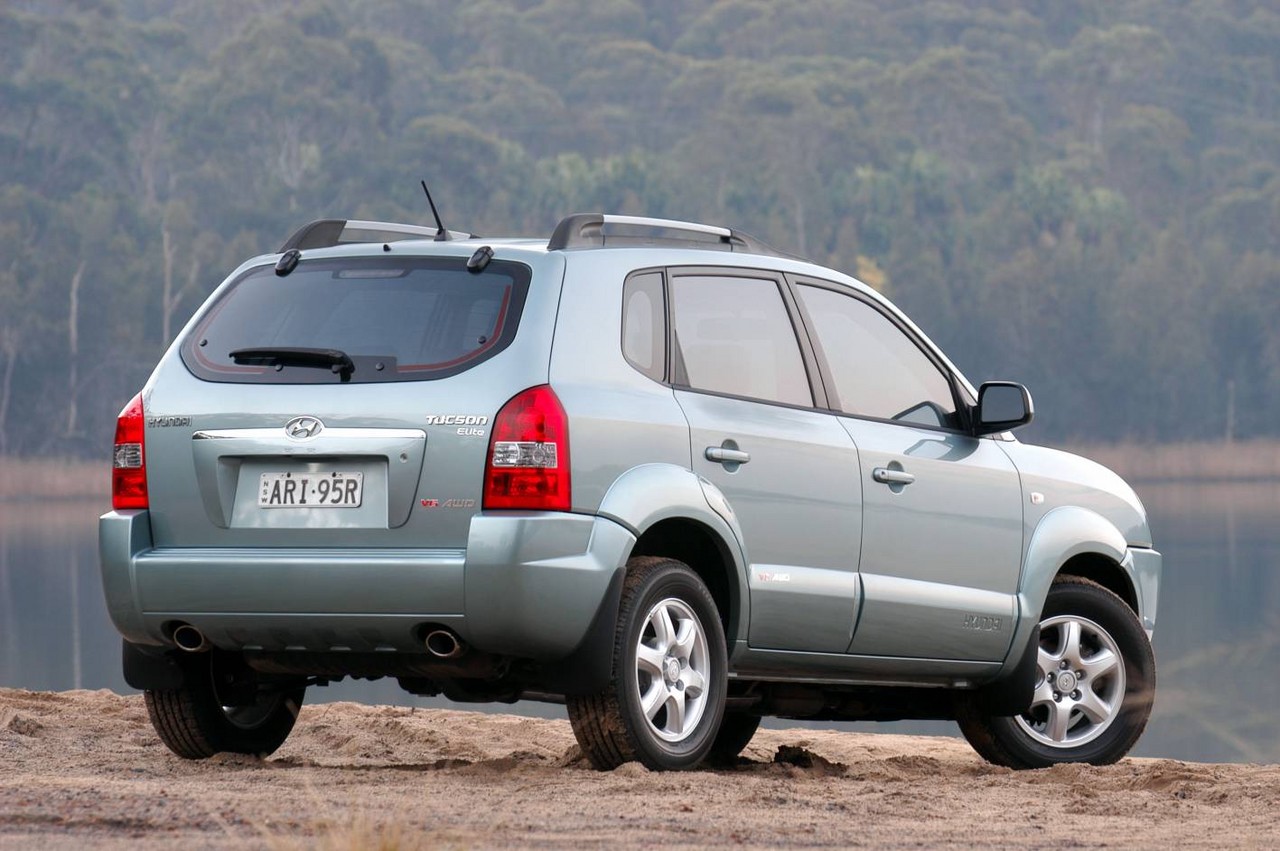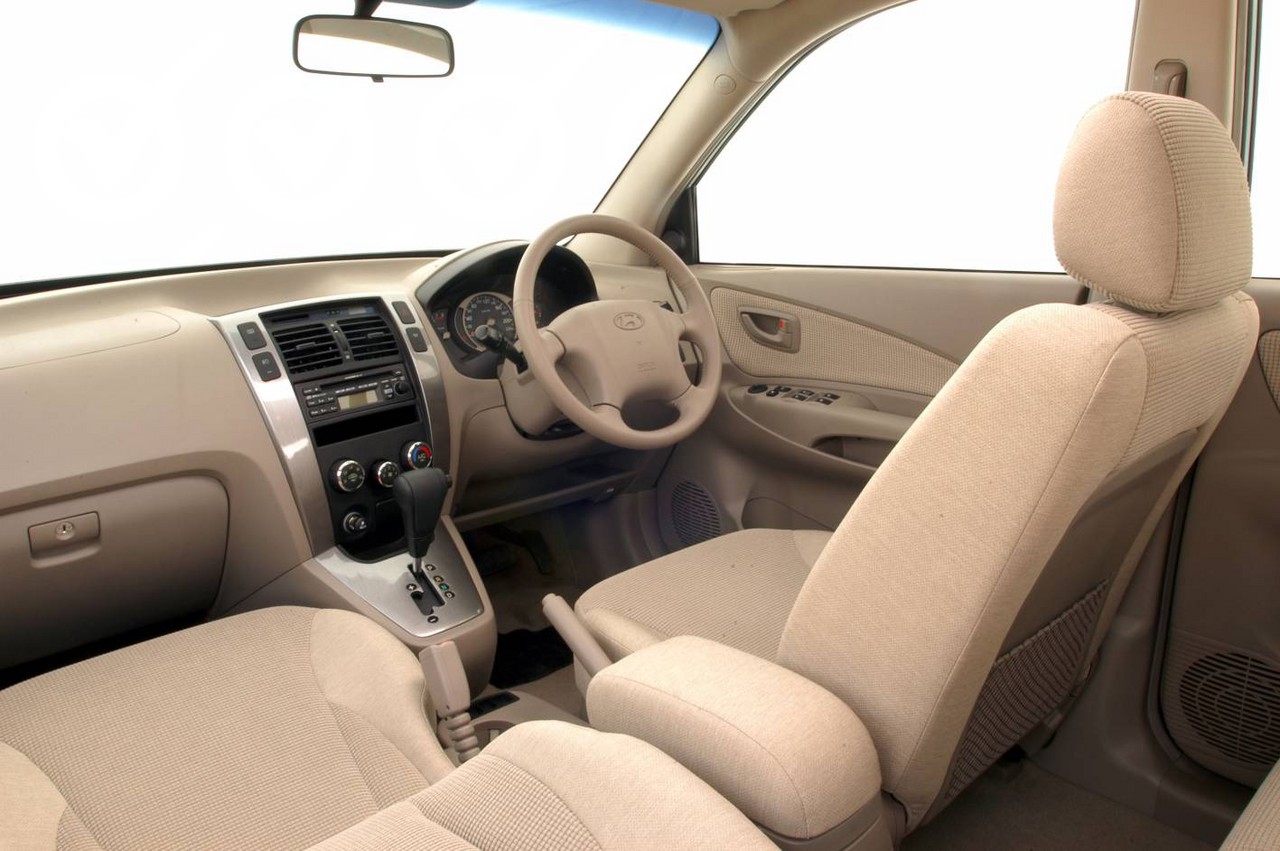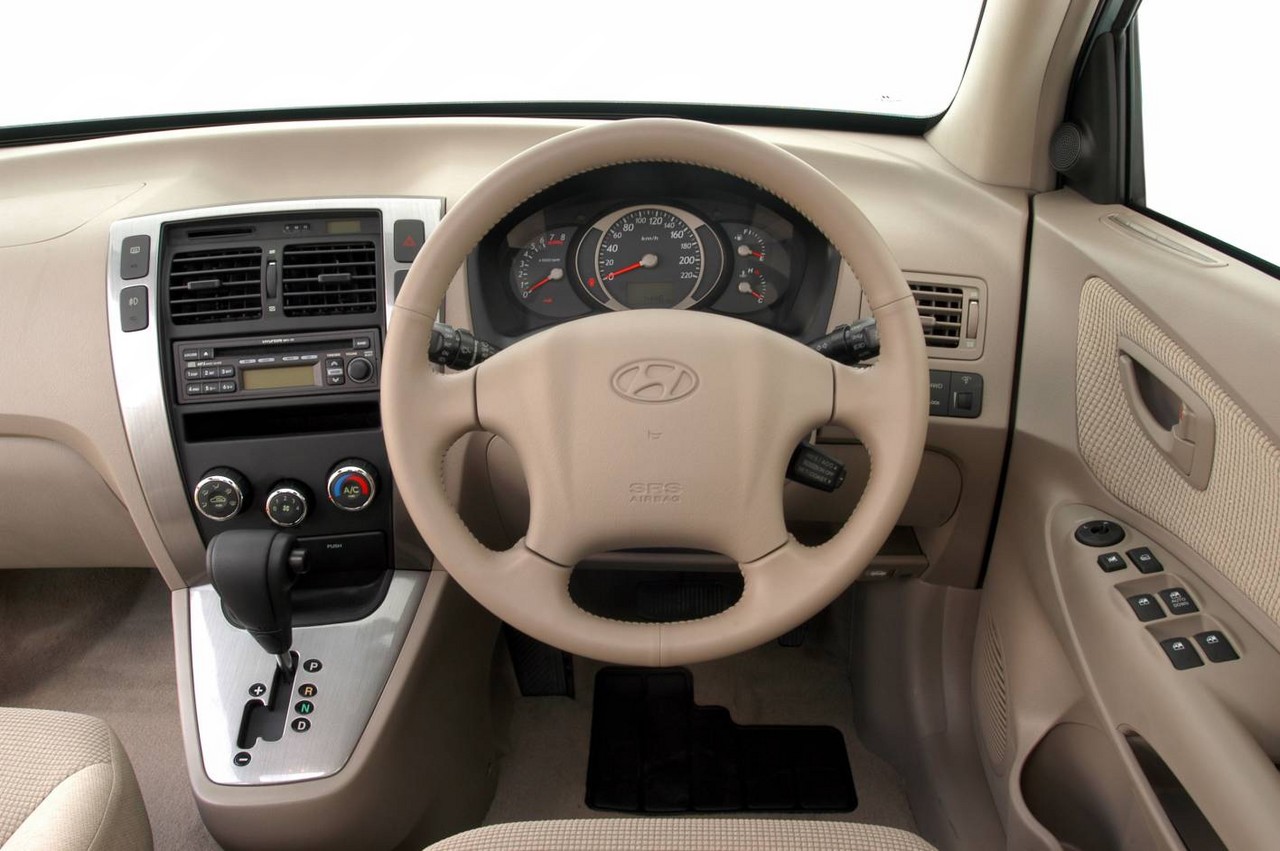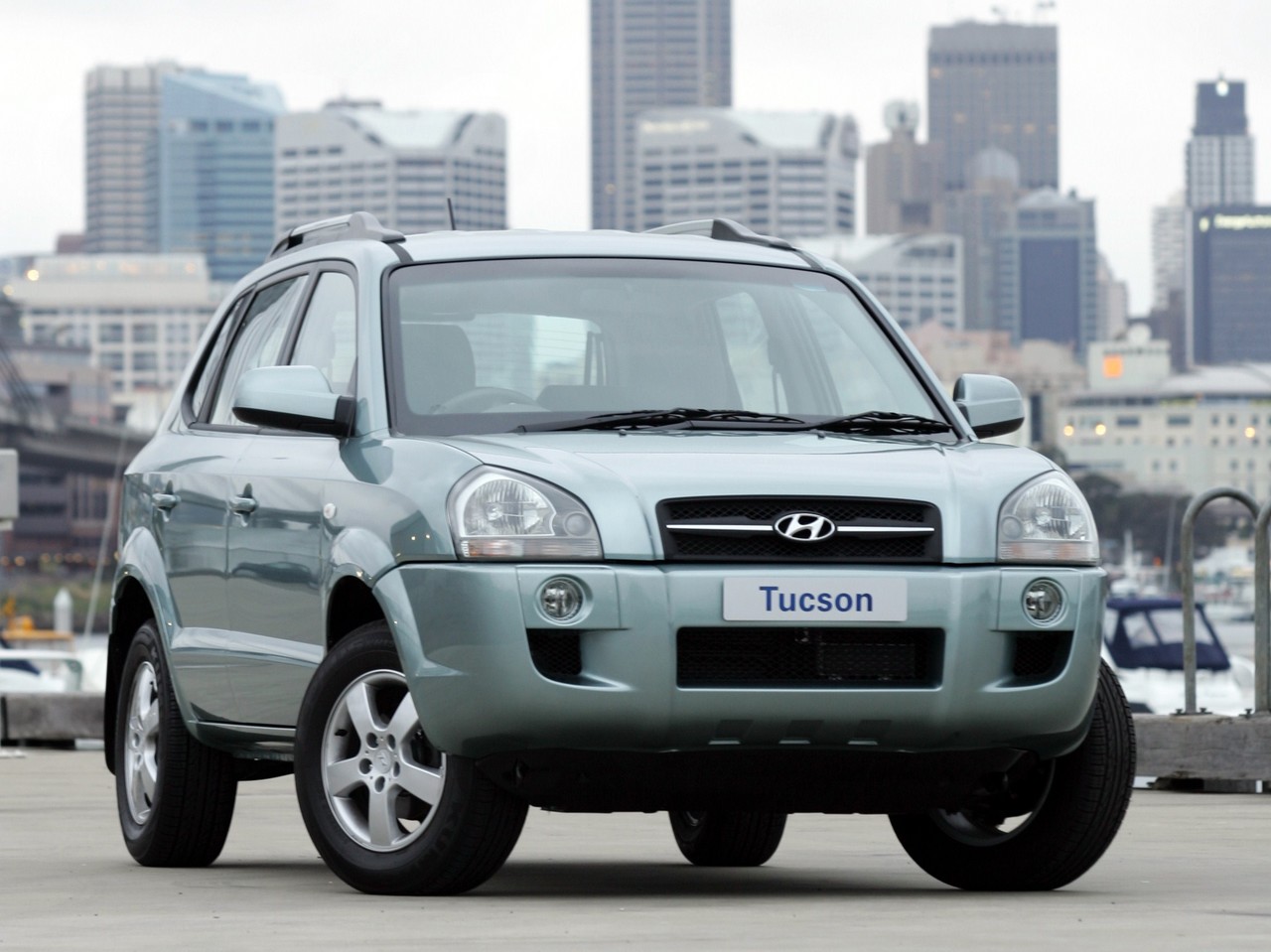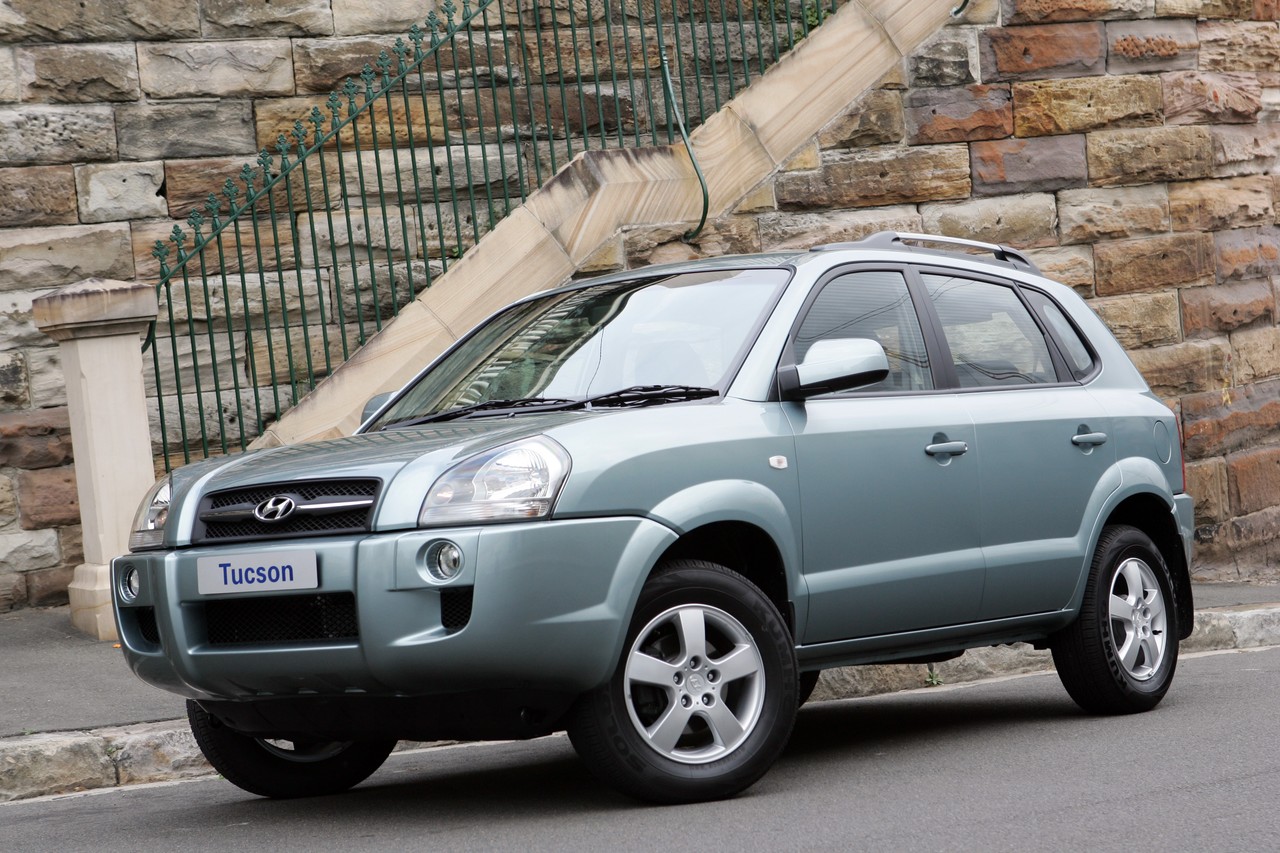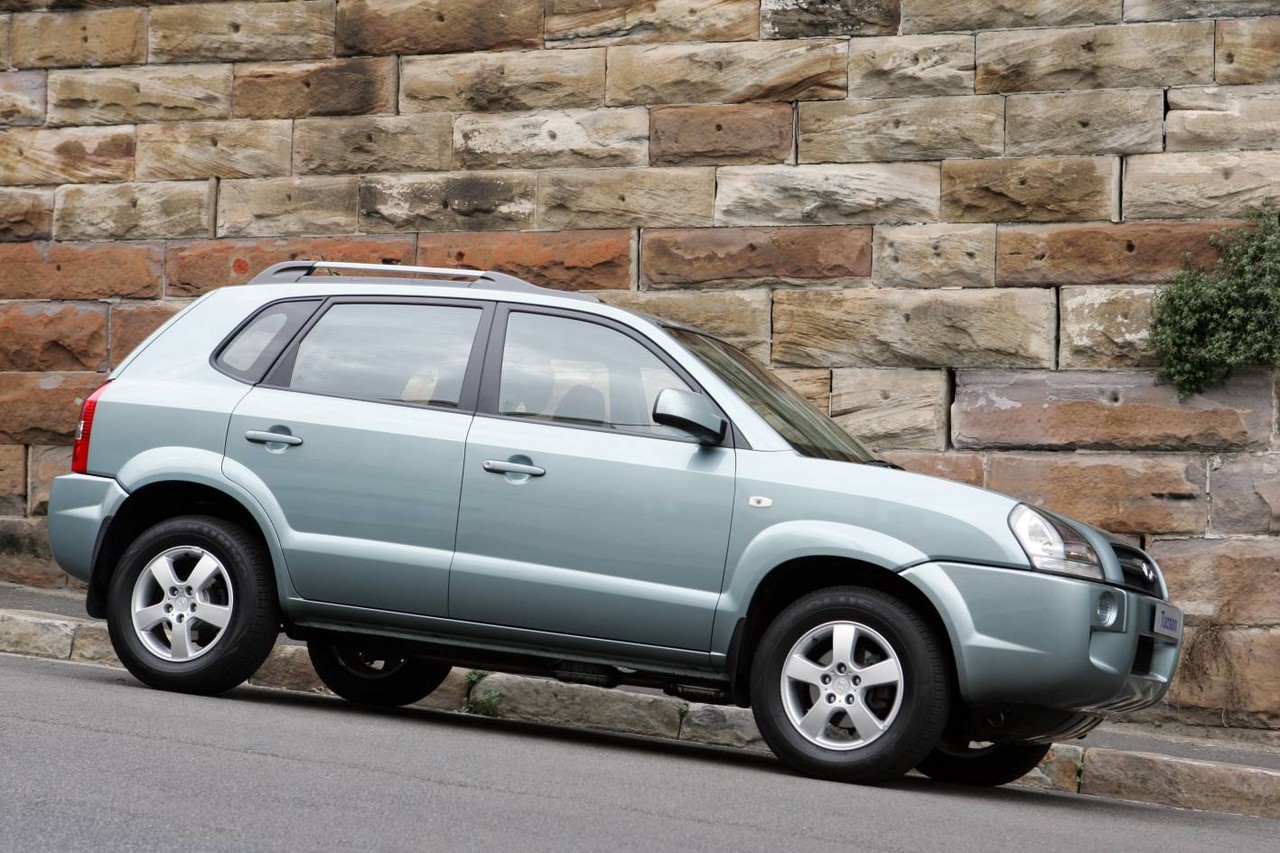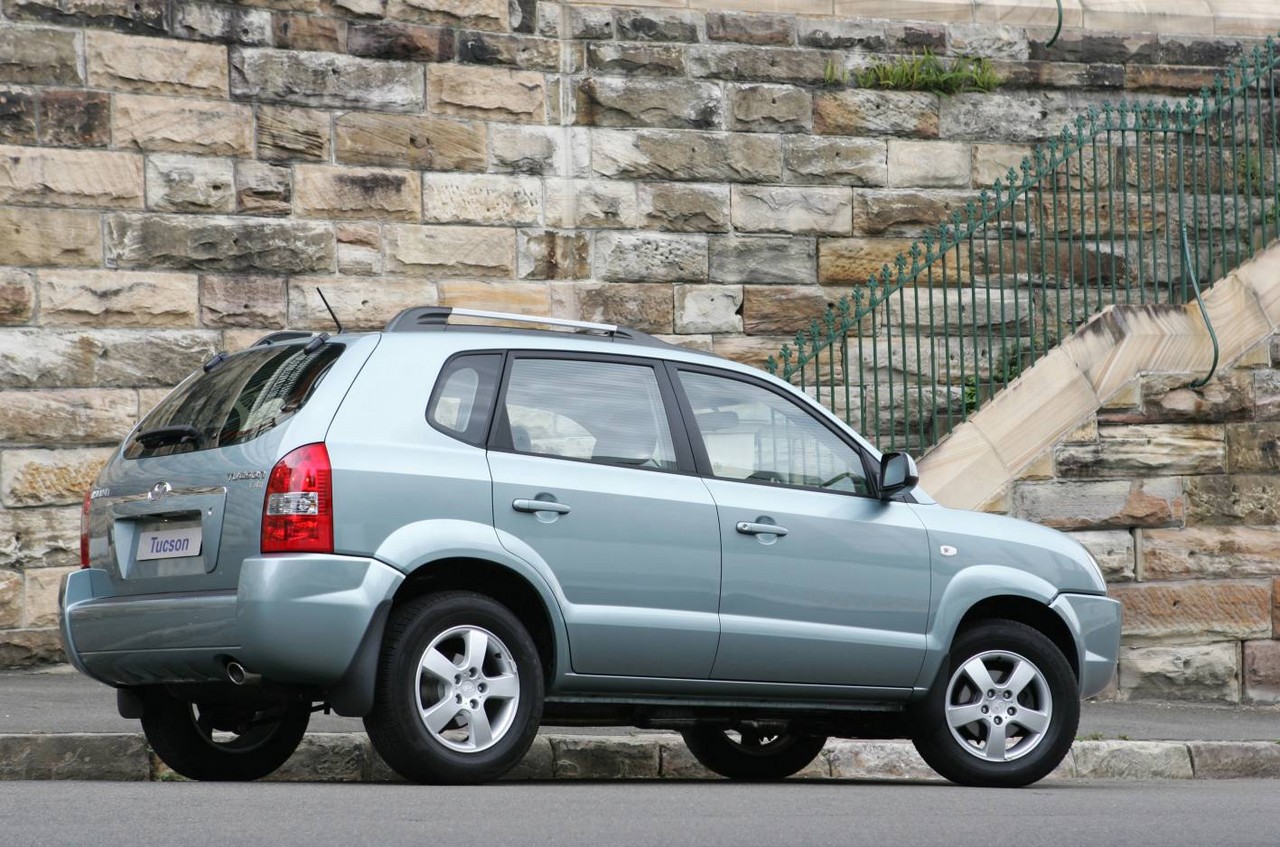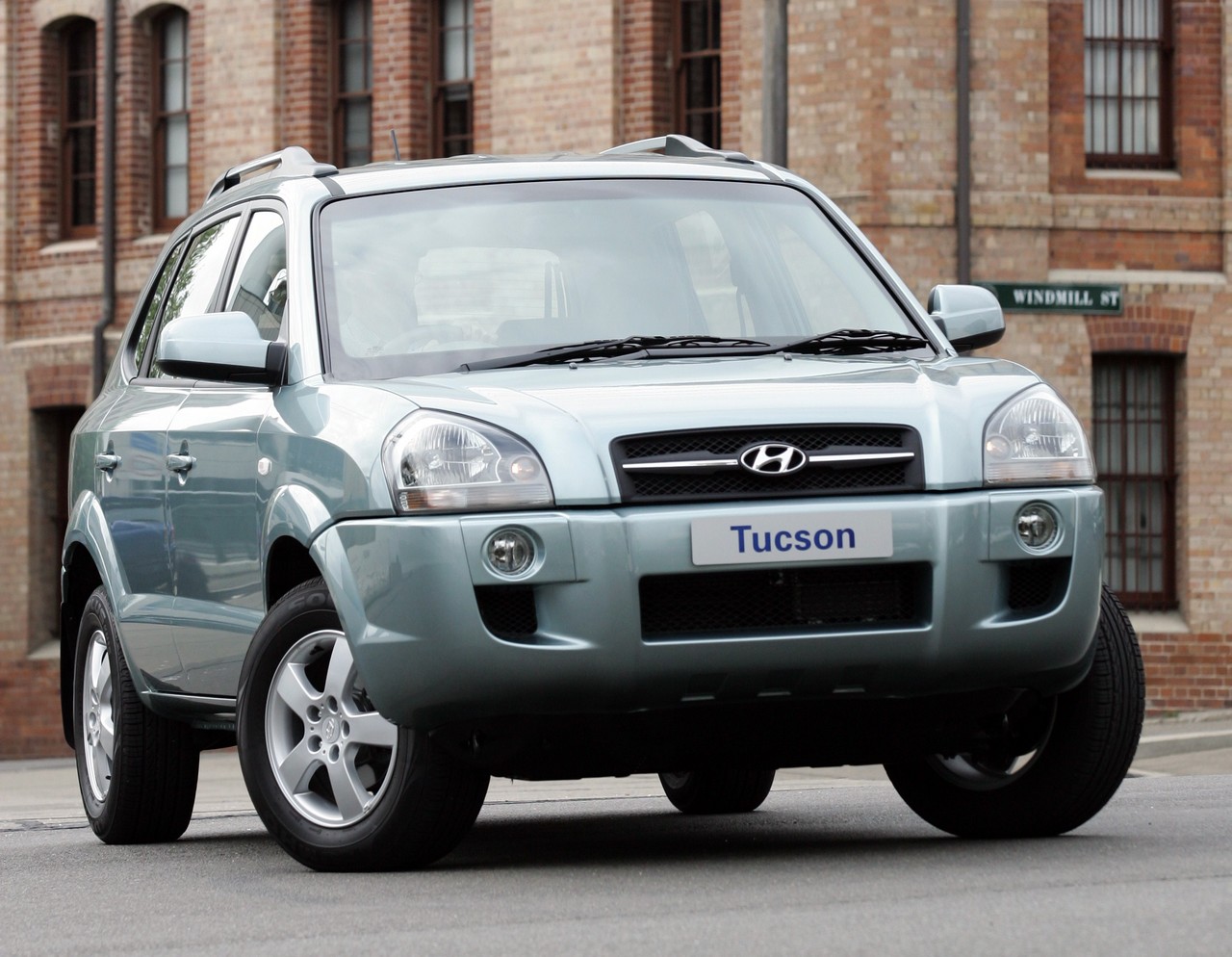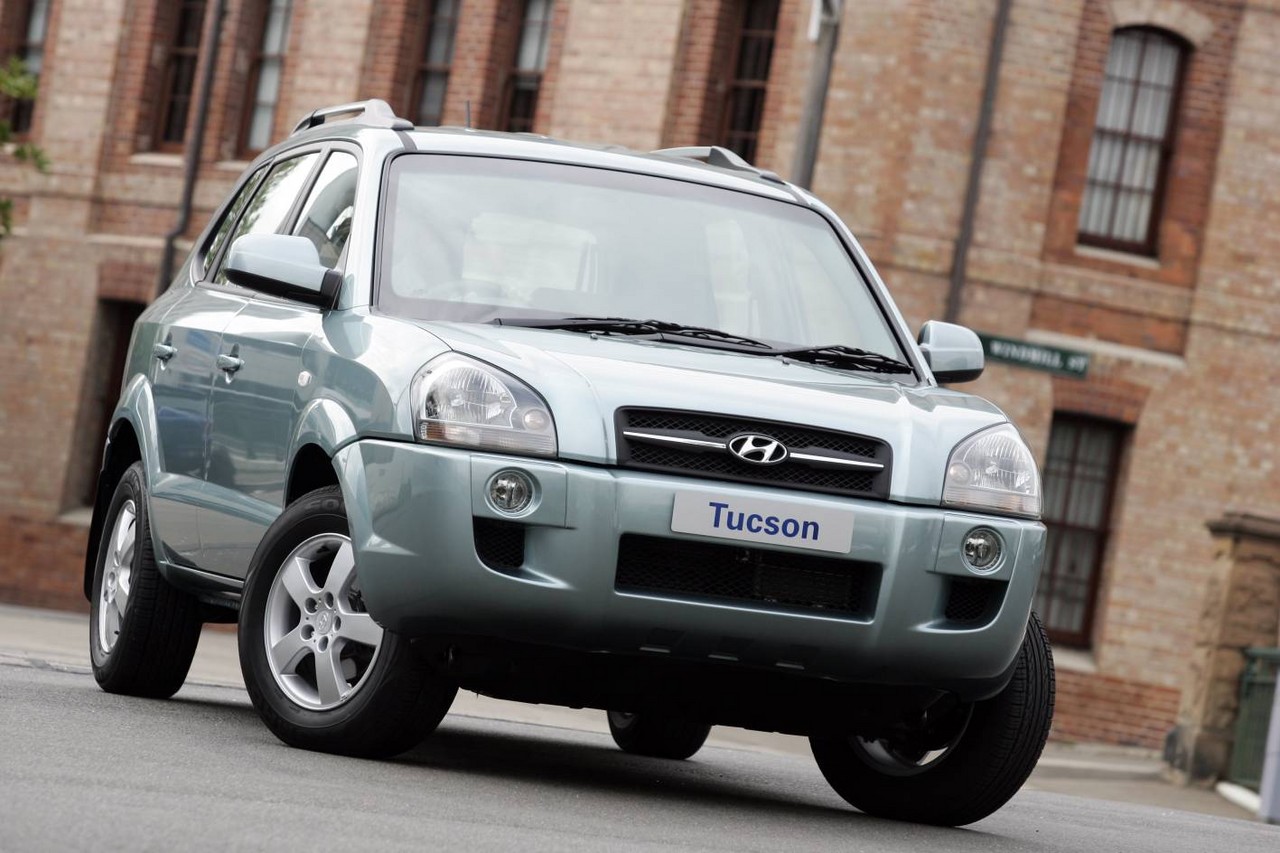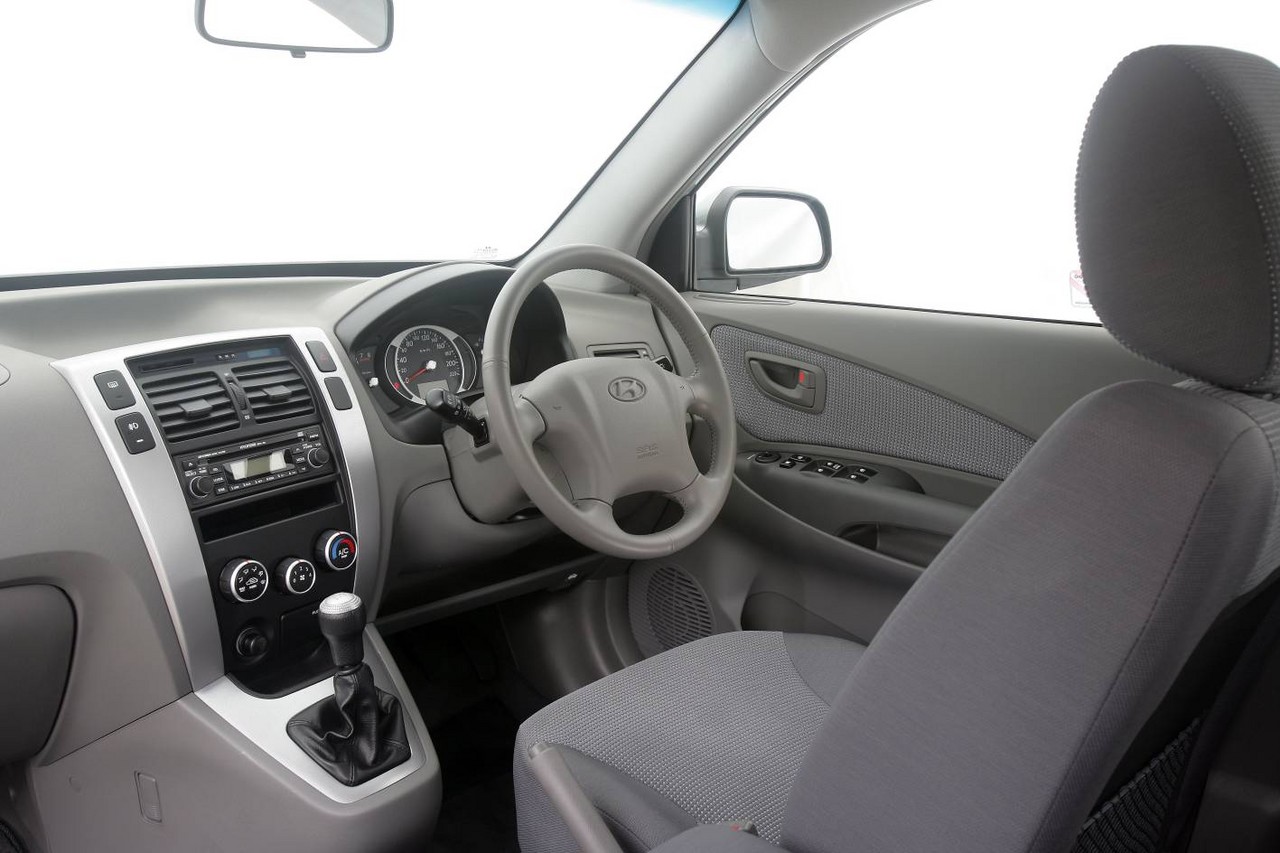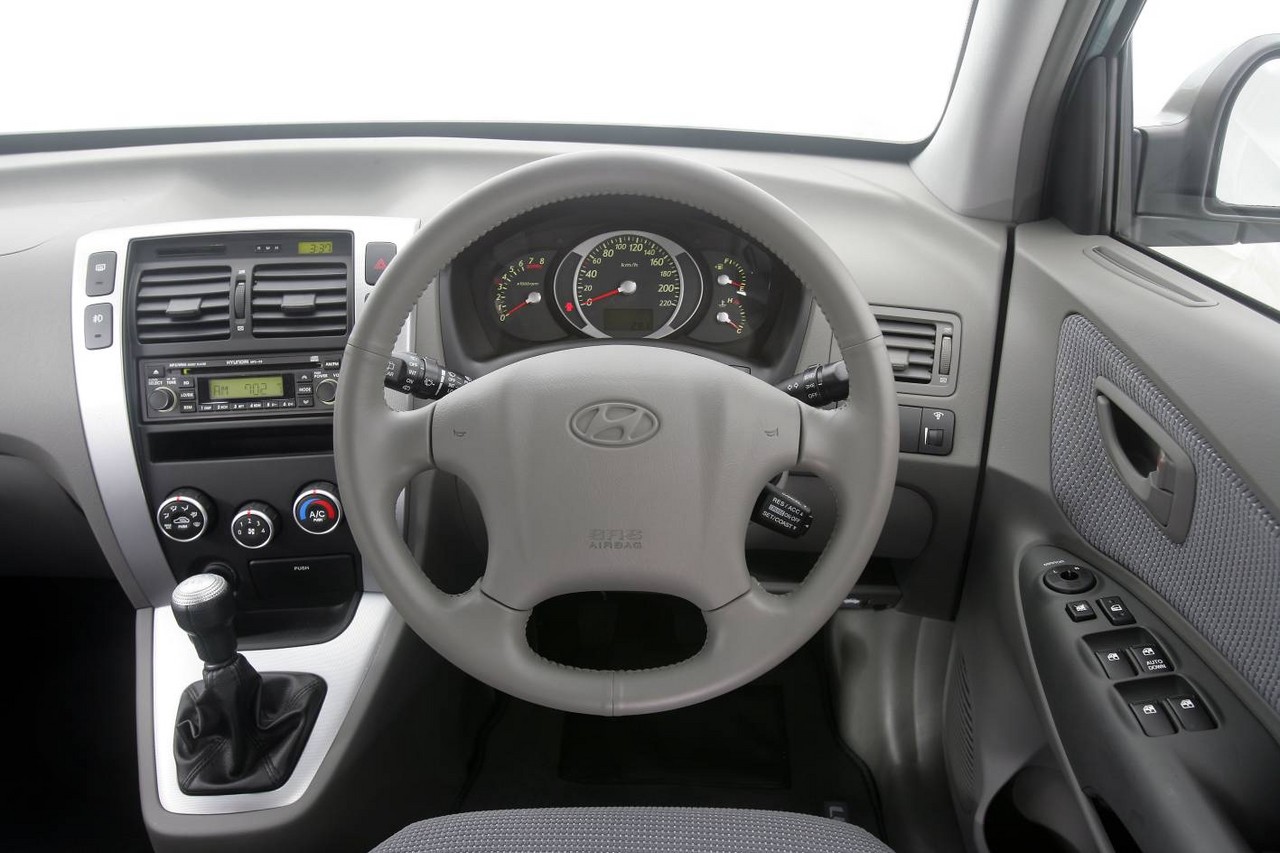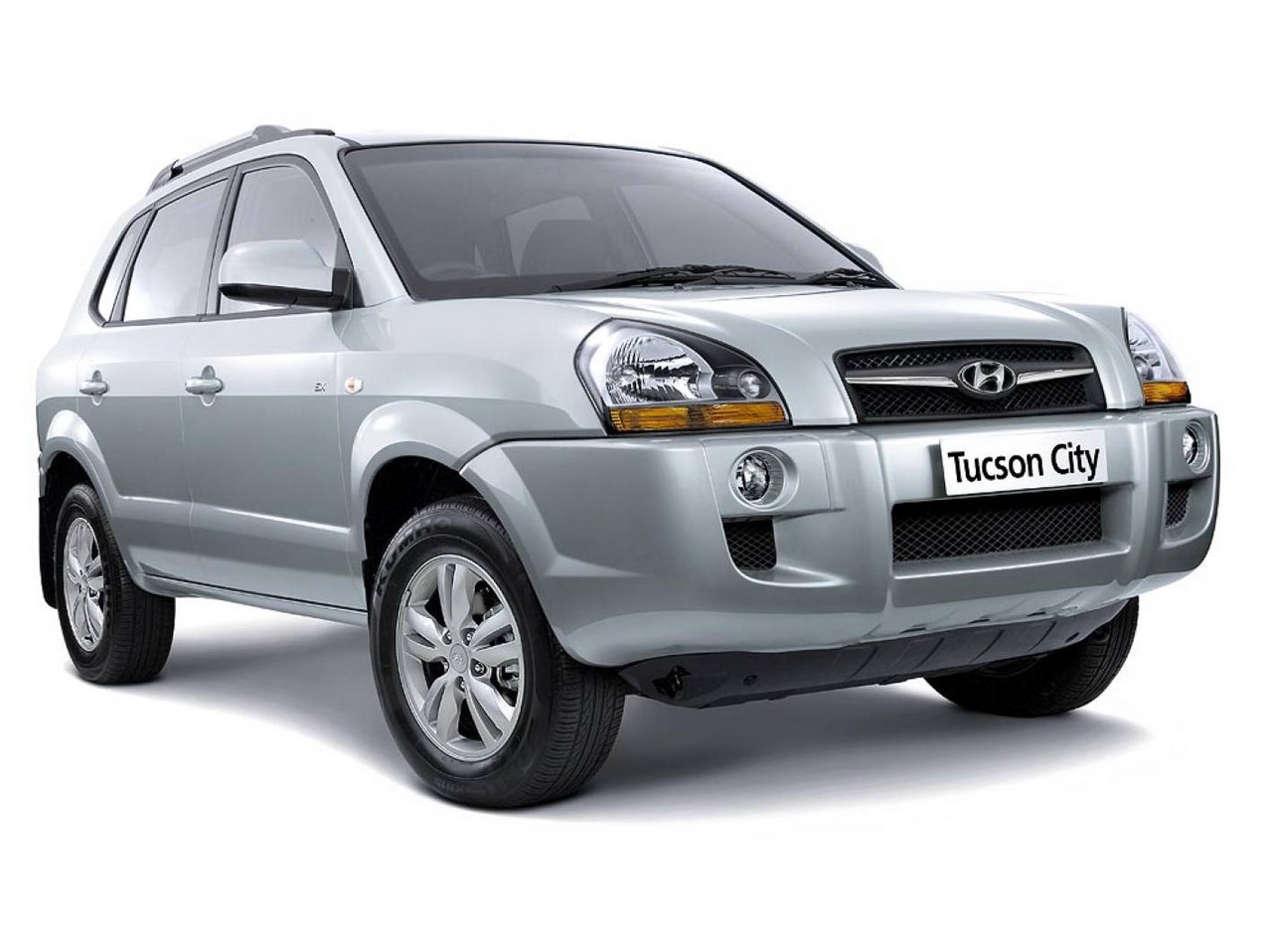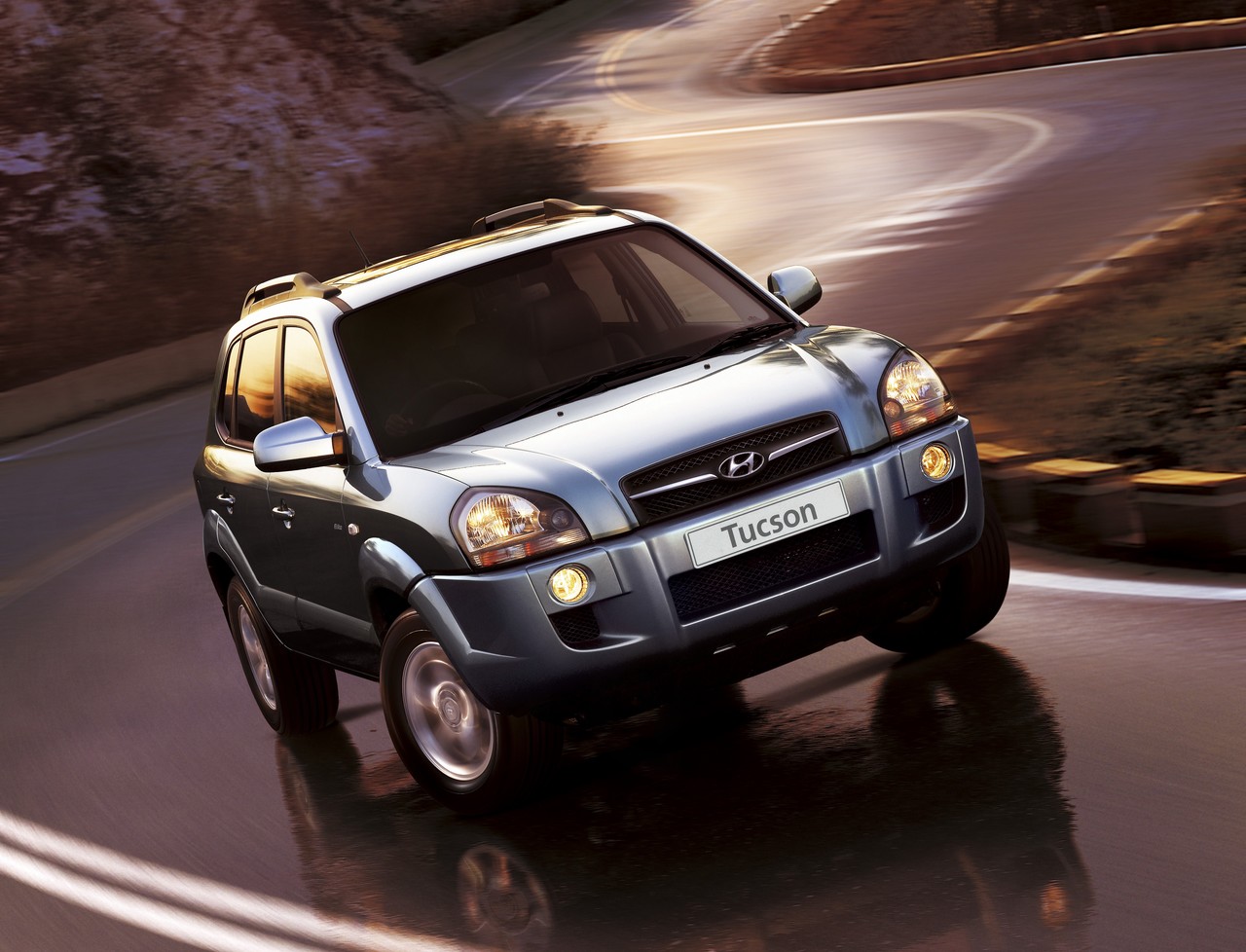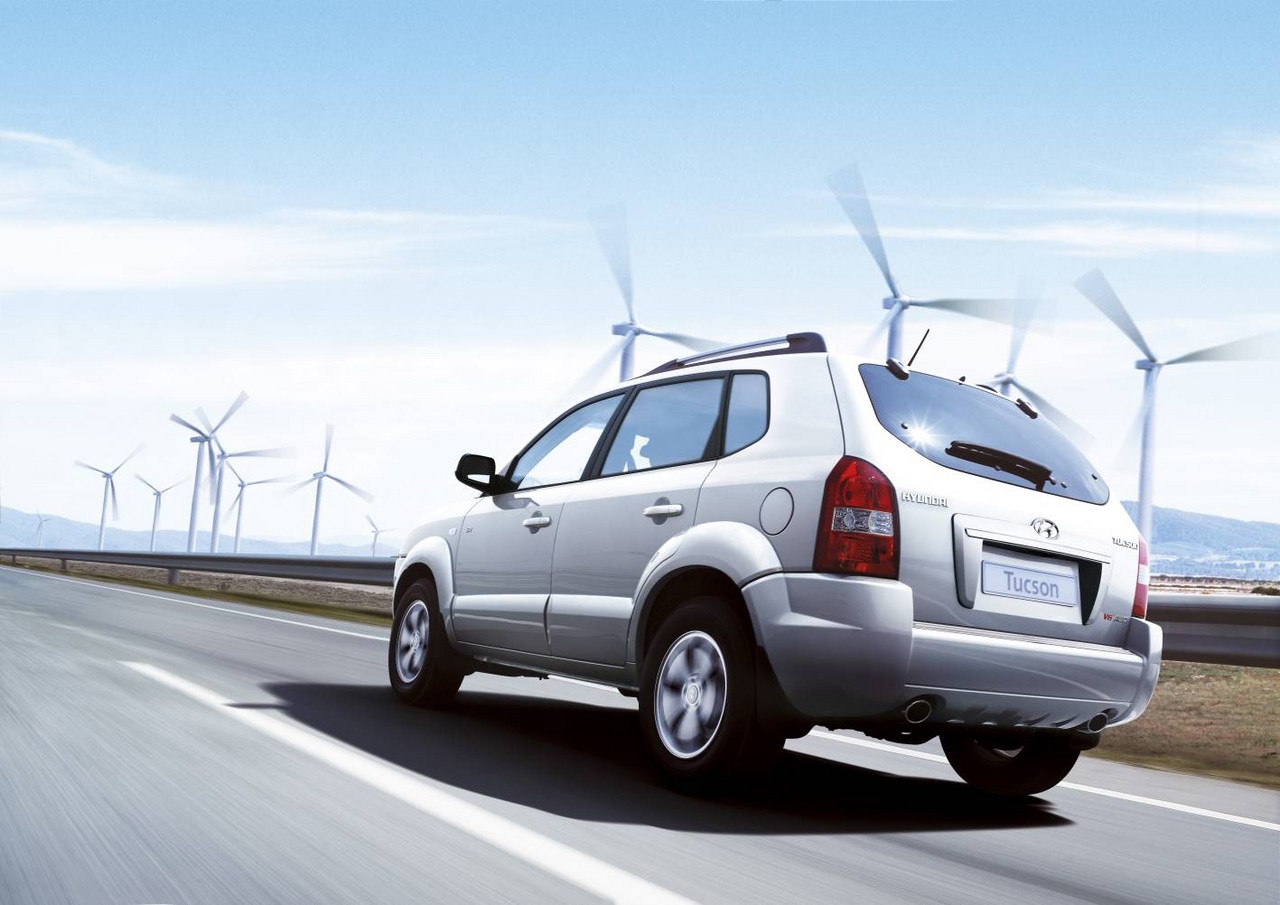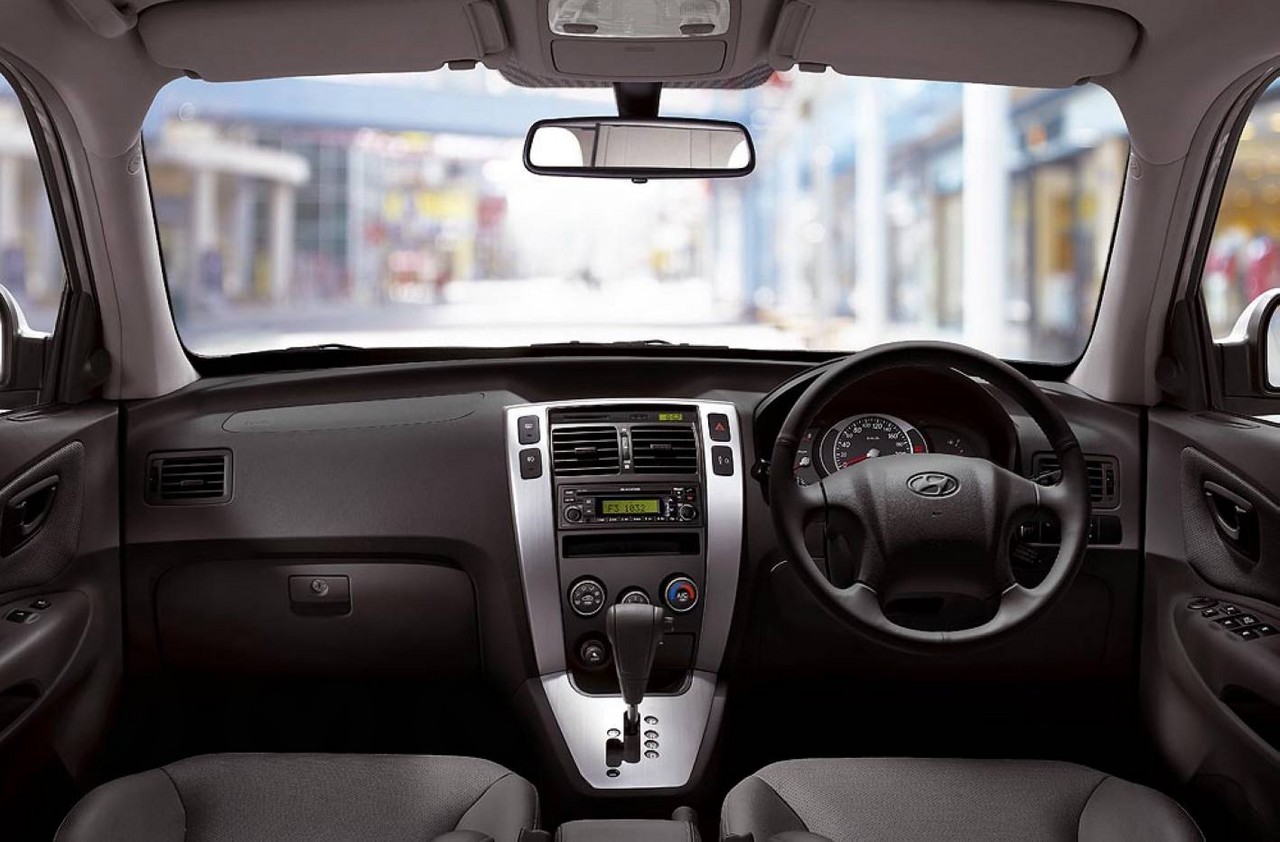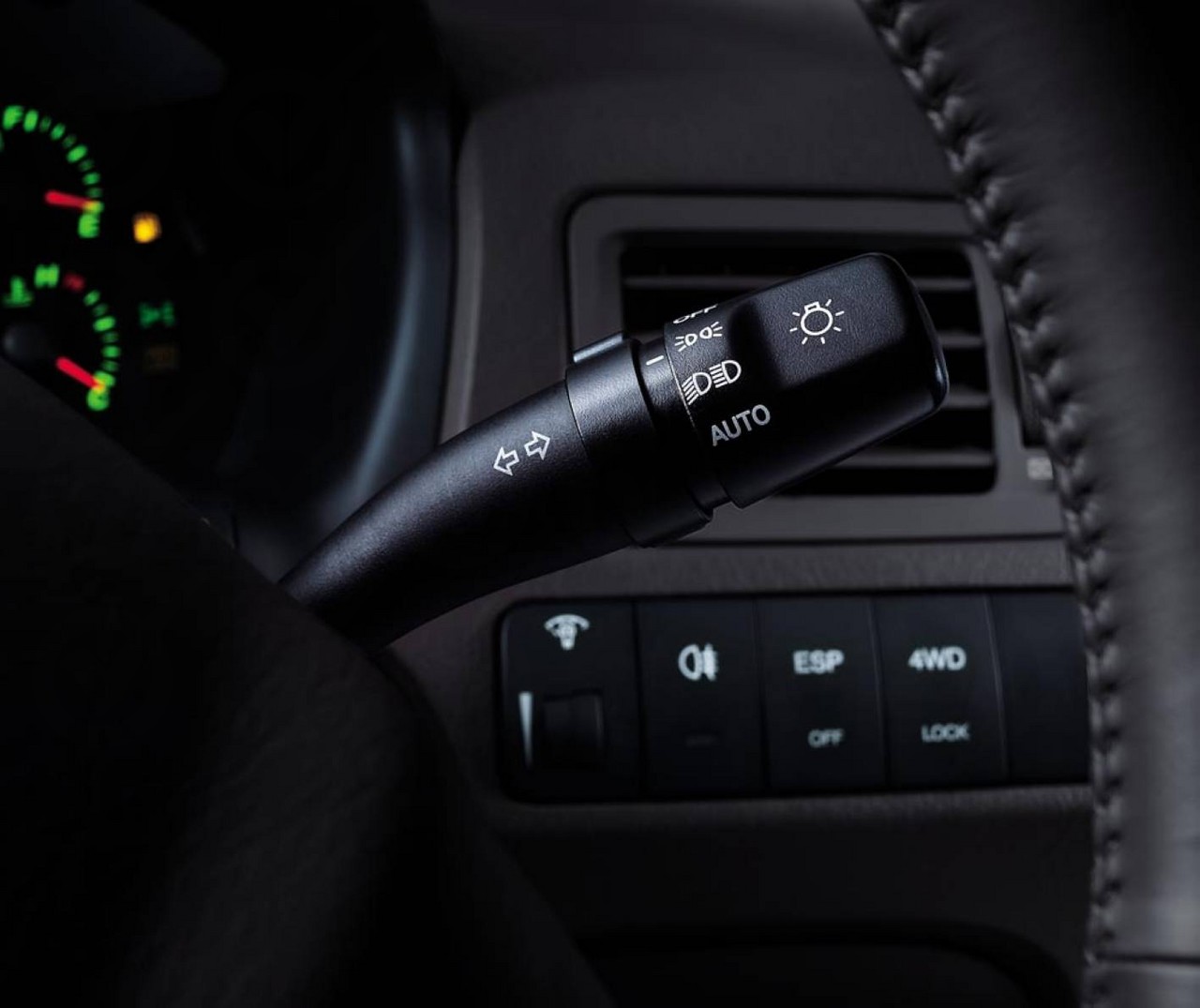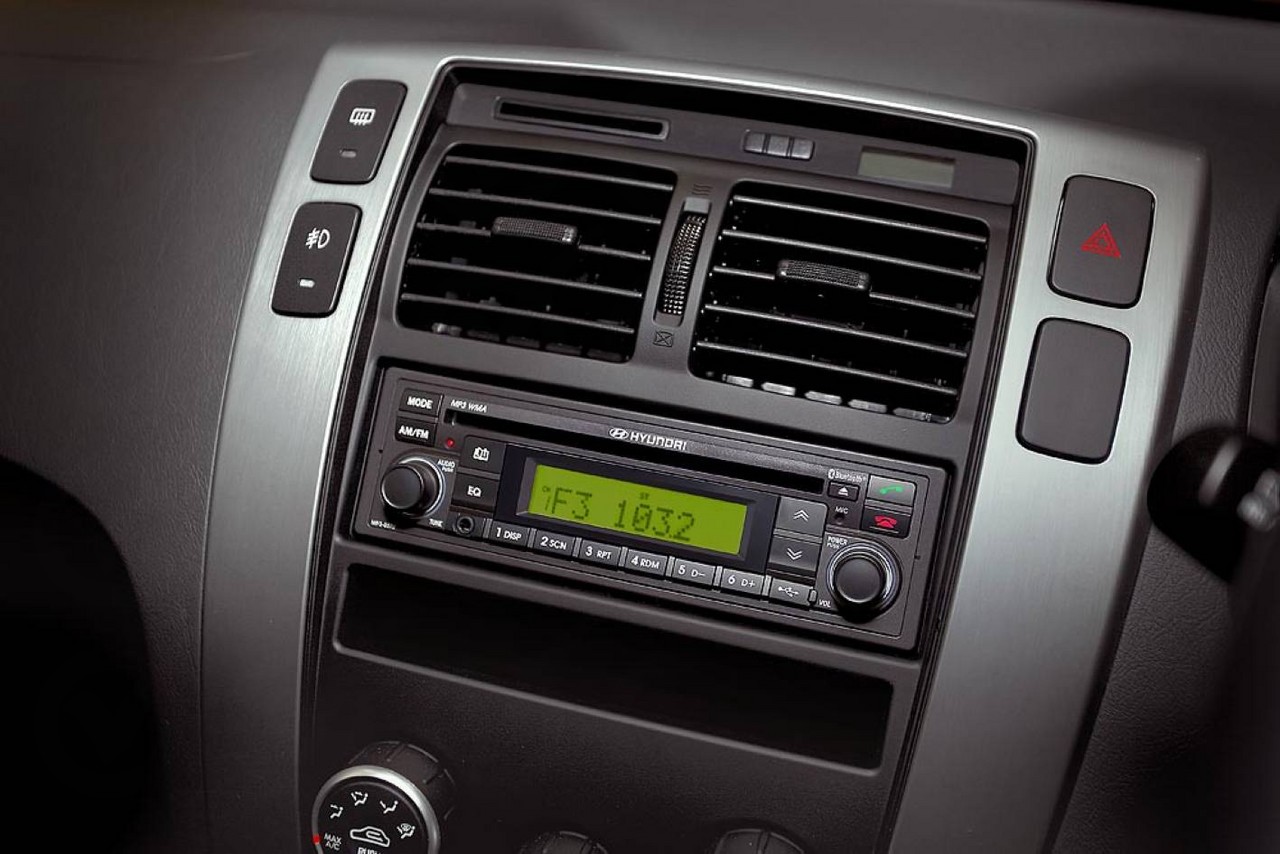
- Refined V6 petrol engine
- Comfortable ride
- Versatile storage
- Suspension lacks body control
- 2.0-litre petrol engine lacks refinement
- Gearing for V6 engine is too tall
- Dull interior
Review: Hyundai XD.I Tucson (2004-07)
Overview
Released in August 2004, the Hyundai XD Series I (XD.I) Tucson was a compact SUV. Manufactured in Ulsan, South Korea, the Tucson range initially consisted of the ‘V6 AWD’ variant which was powered by a 2.7-litre V6 petrol engine. In October 2005, however, the range was expanded with the front-wheel drive ‘City’ variant which was powered by a 2.0-litre four-cylinder petrol engine.
G4GF and G6BA engines
Of the engines,
- The 2.0-litre G4GF ‘Beta II’ four-cylinder petrol engine had a cast iron engine block, alloy cylinder head, double overhead camshafts (chain-driven), four valves per cylinder and a compression ratio of 10.1:1; and,
- The 2.7-litre G6BA ‘Delta’ V6 petrol engine had aluminium alloy construction, double overhead camshafts, four valves per cylinder and a compression ratio of 10.0:1.
Both engines were available with four-speed automatic transmissions; for models with V6 engines, the transmission also featured a Selectronic sequential gearshift function.
Dimensions and suspension
Like the closely-related Kia KM Sportage , the Tucson utilised Hyundai’s XD Elantra platfrom. The V6 AWD variants were 4325 mm long, 1830 mm wide, 1730 mm wide and had 2630 mm long wheelbases; the City variants, however, were 35 mm narrower (at 1795 mm) and 50 mm lower (1680 mm).
The Tucson had MacPherson strut front suspension and multi-link rear suspension (both with coil springs, gas-filled dampers and anti-roll bars).
| Variant | Edition | Years | Engine | Trans. | Peak power | Peak torque |
|---|---|---|---|---|---|---|
| V6 AWD | [Unnamed], Elite |
2004-07 | 2.7-litre petrol V6 | 4sp auto | 129 kW at 6000 rpm | 241 Nm at 4000 rpm |
| City | N/A | 2005-07 | 2.0-litre petrol I4 (FWD) | 4sp auto | 104 kW at 6000 rpm | 184 Nm at 4500 rpm |
V6 AWD system
The V6 AWD had a Borg-Warner-supplied electronically controlled all-wheel drive (AWD) system which consisted of an electromechanical multi-clutch plate with an Interactive Torque Management unit mounted ahead of a torque-sensing limited slip rear differential. In normal, conditions, the AWD system drove via the front wheels, but up to 50 per cent of the engine’s torque could be directed to rear wheels if traction was lost. The AWD system also featured a ‘lock’ mode for full-time four-wheel drive with a 50:50 front:rear torque split for speeds of up to 30 km/h.
Safety equipment
Standard safety equipment for the V6 AWD and City variants included dual front airbags, ABS, electronic brake force distribution, traction control and front seatbelts with pretensioners and load limiters. Beyond this, the V6 AWD Elite added front side (thorax) airbags and full length curtain airbags (i.e. for front and rear occupants).
Euro NCAP crash testing
In Euro NCAP crash testing , a 2006 Tucson with a 2.0-litre turbo-diesel engine – and equipped with dual front airbags, front side airbags and full-length curtain airbags as per the V6 AWD Elite – received a four star adult occupant protection rating with a score of 29.24 out of 37. In the frontal offset crash test, the passenger compartment held its shape well, but protection from serious chest and leg injury was marginal for the driver.
Features: Tucson V6 AWD
Standard features for the Tucson V6 AWD included 16-inch alloy wheels, a 25 watt four speaker sound system with CD player and MP3-compatibility, air conditioning, cruise control, front and rear fog lights, 60/40 split and folding rear seats, remote central lockingpower mirrors and windows, three 12 volt power outlets, a cargo cover, luggage net, roof rails and an immobiliser.
Beyond this, the Tucson V6 AWD Elite was differentiated by its six-spoke alloy wheels with wider and lower profile 235/60 Bridgestone Turanza tyres, six speaker sound system, power tilt/slide sunroof, automatic headlights, premium cloth seat fabrics, leather-wrapped steering wheel and gearshift, trip computer and brushed alloy interior highlights. There was also an ‘S’ badged version of the Elite which was distinguished by its body-coloured bumpers and side cladding and available only in Aqua Silver (light-medium green mica) or New Mid Silver (light gold metallic) paint finishes.
Features: Tucson City
Released in October 2005, the Tucson City was similarly equipped to the V6 AWD but incorporated certain updates that the V6 AWD variants only acquired in May 2006 (see below). As such, the City variants initially differed from the V6 AWD by virtue of their upgraded 45 watt six speaker sound system with graphic equalizer and MP3/WMA compatibility, leather-wrapped steering wheel and gearshift, driver’s seat lumbar adjustment, upgraded seat fabrics, soft-touch dashboard, retractable security blind, slide-out extensions in the sun visors and vanity mirror lights.
May 2006: Tucson update
With the May 2006 update, the V6 AWD models had a higher final drive ratio and a reprogrammed transmission for earlier torque converter lockup to achieve improved fuel economy. In addition to the changes introduced by the City variants for the standard V6 AWD (see ‘Features: City variants’, above), the Elite editions were also fitted with new double-spoke alloy wheels, leather seat side bolsters, ‘moquette’ mesh fabric for the seat facings and door trim inserts and featured satin alloy interior highlights. Furthermore, the Elite S was available in black and silver paint finishes.
Review: Hyundai XD.II Tucson (2007-08)
Overview
Released in May 2007, the XD Series II (XD.II) Tucson introduced a revised range: the City variants included SX and Elite editions – the former available with a newly introduced five-speed manual transmission – while the V6 AWD range was reduced to the SX.
| Variant | Edition | Engine | Drive | Trans. | Peak power | Peak torque |
|---|---|---|---|---|---|---|
| V6 AWD | SX | 2.7-litre petrol V6 | AWD | 4sp auto | 129 kW at 6000 rpm | 241 Nm at 4000 rpm |
| City | SX | 2.0-litre petrol I4 | FWD | 4sp auto, 5sp man. |
104 kW at 6000 rpm | 184 Nm at 4500 rpm |
| Elite | 2.0-litre petrol I4 | FWD | 4sp auto |
Safety equipment
Standard safety features for the Tucson SX included dual front airbags, ABS, electronic brake force distribution and front seatbelts with pretensioners and load limiters. The V6 AWD SX was also fitted with traction control, while the City Elite further added electronic stability control, front side (thorax) airbags and full-length curtain airbags.
Features
Standard features for the Tucson SX were substantially the same as for the entry-level variants in the XD.I Tucson range, with the V6 AWD SX distinguished by its double-spoke alloy wheels, low-profile 235/60 tyres, dual chrome exhaust outlets and body-coloured bumpers and side cladding. Compared to the City SX, the Elite edition added a six speaker sound system, combination ‘moquette’ /leather seats, sunroof and trip computer.
Review: Hyundai XD.III Tucson (2008-10)
Overview
Released in September 2008, the XD Series III (XD.III) Tucson introduced improved safety equipment and additional features. Visually, the XD.III Tucson could be identified by its revised front grille with thicker horizontal bar, orange indicators in the lower part of the headlights, redesigned rear tailgate garnish, new alloy wheel designs and charcoal black interior.
| Variant | Edition | Engine | Drive | Trans. | Peak power | Peak torque |
|---|---|---|---|---|---|---|
| V6 AWD | SX | 2.7-litre petrol V6 | AWD | 4sp auto | 129 kW at 6000 rpm | 241 Nm at 4000 rpm |
| City | SX | 2.0-litre petrol I4 | FWD | 4sp auto, 5sp man. |
104 kW at 6000 rpm | 184 Nm at 4500 rpm |
| Elite | 2.0-litre petrol I4 | FWD | 4sp auto |
Safety equipment
Safety equipment was improved with electronic stability control and traction control made standard across the range. While the Elite was the only model to be fitted with front side and curtain airbags as standard, these could be optioned on the SX models for $700 (the ‘Protectz’ pack).
Features
Standard features were extended to include a four speaker sound system with USB and auxiliary inputs, Bluetooth audio streaming (for compatible devices), automatic headlights and a trip computer. The City Elite was distinguished by its six speaker sound system (including tweeters), full leather seats and trim and a power glass sunroof.
Related links
